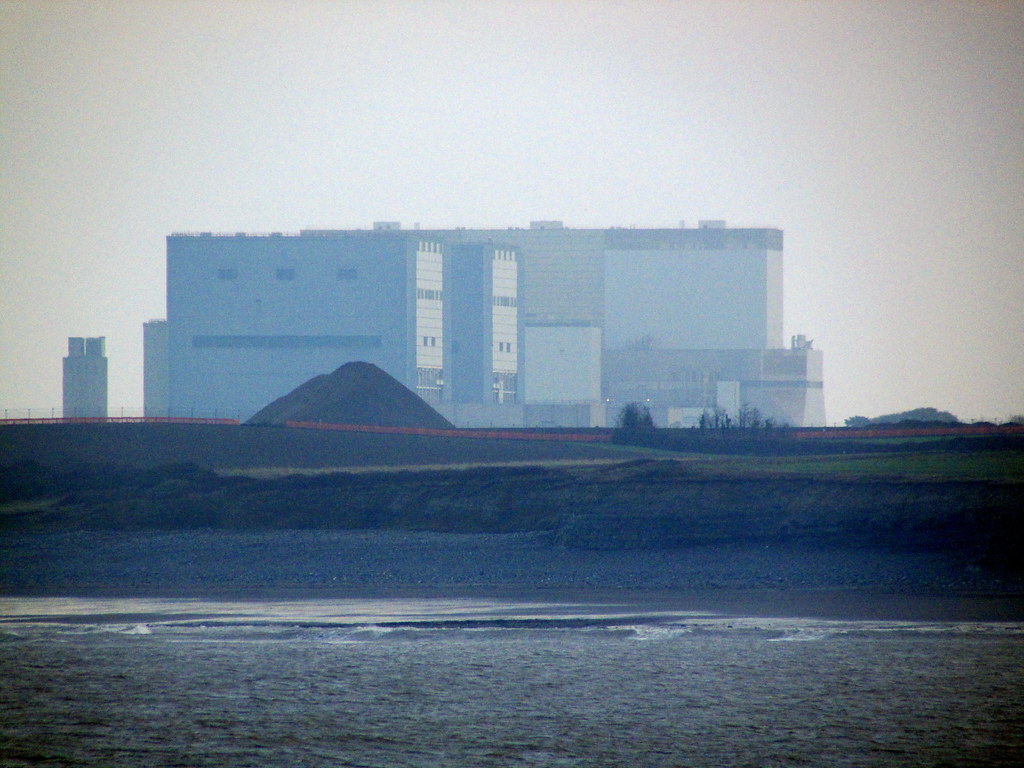After nearly four years of delay, Theresa May, eventually consented to the Hinkley Point C nuclear station on 14 September. The station, if built, will be the first UK nuclear project since the Sizewell C PWR station came on stream nearly 30 years ago. And with an already failed European Pressurised Water Reactor (EPR) design at the heart of the Hinkley project, it seems impossible to reconcile such a certain economic failure with Tory neoliberal market philosophy.
Brian Parkin unravels the web of stupidity, dogma, secrecy and privatisation failure that has resulted in the UK being the only advanced economy revisiting an economically and environmentally discredited world of nuclear power fantasy.

Capacity meltdown
The UK electricity privatisation exercise of 1989 blew a hole in the Tory ideological myth that laggardly state owned utilities, once privatised, would experience a brave new world of entrepreneurial market-driven risk-taking and investment. It also destroyed a myth of the international nuclear club that nuclear power could stand the market test of competition free from any requirement of state support or subsidies.
27 years on and the UK power industry, fragmented, milked for profits and now chronically under-invested, has shrunk from a capacity margin of 25% in 1990 to just 1.25%. Without new capacity and further plant retirements, the lights could well start going out. Which is where the most transparent excuse for Hinkley Point comes in: without new nuclear, the UK would not be able to maintain power supplies or meet its carbon emissions targets.
Investment crisis
In the last 30 years, neoliberal dogma has substituted economic policy, let alone an actual energy strategy. It is clear that the privatisation of state assets – initiated by the Tories and uncorrected by 13 years of Labour government – has gone through three phases:
- A heroic ‘vanguard’ phase of privatisations and the ‘clearing out’ of labour market blockages in the form of union resistance
- A consolidation phase of asset stripping, profit maximisation and deregulation
- A twilight phase of stagnant investment, market failure and asset depreciation
Throughout this process, it has become clear that the initial heirs of privatisation – the hedge funds and barrow-boy traders – have largely vacated long-term returns markets, and instead have chosen to ‘diversify’ their investment portfolios in the quick return end of the casino. They have become ‘risk averse’, and with governments gladly divesting themselves of economic planning and responsibilities, investment – as in the case of nuclear power – has in hybrid form fallen back into the state’s sphere of responsibility.
China syndrome
However seemingly hard-headed and market-fixated their reputation, the Tories are, if anything, pragmatic. And given centuries of ingrained ruling class ineptitude, they have to be. But more than anything, the Tories are an intensely ideological political outcrop of a small-minded and nationalistic historical current. Which, in a way, is how the Hinkley Point nuclear fiasco has come to pass.
Firstly, the ineptitude that renders them incapable of understanding the technical realities of utility services and the necessary combination of planning, investment and regulation needed to make them work.
Secondly, the ideological fetishism of primitive market economics; and thirdly, the nationalism that assumes the security of the realm can be reconciled with their unique grasp of the business model.
And it is on Hinkley, entirely dependent on overseas state capital investment and the invitation to foreign interests to become operationally involved in the financing, ownership and running of the nation’s power supply system, that all of these ideological dogma’s have foundered.
In September 2015, when chancellor George Osborne (remember him?) and Energy Secretary Amber Rudd went to China with a begging bowl for investment in new UK infrastructural projects, it was really a confirmation the ‘Thatchers children’, who got rich quick in the City of London throughout the late 80’s and early 90’s, had developed an aversion for investments in the country whose assets they had previously plundered.
But the Chinese Communist Party officials and economists with whom they were negotiating clearly have ambitions beyond the Hinkley project, which they will have to partner with the French state-owned EDF. A necessary condition for backing Hinkley is for the Chinese State Nuclear Power Technology Corporation to have access to, and first refusal for, the nuclear site at Bradwell in Essex for the siting, ownership and operation of the new and so-far untried Chinese CAP 1400 third generation PWR reactor.
Fixing the market
The Hinkley Point C project, as mentioned before, will be a three-way partnership, with EDF providing the reactors, the operational skills and 70% of the capital. The Chinese government will provide 30% of the capital and will partner EDF on the operational side in order to gain experience of the UK power generation and distribution environment. The UK goverment’s partnership role is to make the regulatory and power market pricing regime conducive to a nuclear entrant that will not have to compete for a market for its output.
The UK government is also the insurer of last resort for the project, which effectively indemnifies EDF from all operational and ‘back-end’ (decommissioning and waste management) risk. Furthermore, the UK government has effectively rewritten the power market regulations so as to allow Hinkley Point C (and presumably any future nuclear entrants) a guaranteed price for its power at over double the current strike price of around £45/MWhour. What this means is that if Hinkley C were to start producing power now, it would have a guaranteed market for all its power at a minimum of £94/MWhour index linked at RPI for a duration of the full 35 years of the reactor’s design life.
Failing at the Finnish
The reactor design chosen by 85% state owned EDF for Hinkley Point is the 3rd generation European Pressurised water Reactor (EPR), rated at 1600 MWe and designed and manufactured by the 80% French state owned Areva company. Initially, a strong selling point for this reactor was that it was the design of choice for two new major nuclear projects in Europe.
But as the Hinkley project dragged on, the two showcase EPR projects were very publically running into design faults and construction and commissioning crises. The twin reactor plant at Olkiluoto in Finland had proved such a technical commissioning failure that a nine year delay had led to the Finnish state power company entering into a €10 billion compensation case against EDF and Areva. And as the reactors have failed advanced on-site pressure tests, it is probable that the Olkiluoto project will be abandoned.
Similarly, at Flamanville in Normandy, another EPR project has run into a 6-year delay plus a three times escalation in costs. Furthermore, the French nuclear safety regulator has condemned the EPR pressure castings for too high a carbon content in the cast steel. This will lead to a material deterioration with neutron bombardment, effectively turning the cast steel into brittle cast iron during the operational life of the reactors. Yet this design and material specification remains the choice for the forthcoming Hinkley Point C project.
Opportunity costs
It is certain that a major casualty of Hinkley in the near future will be power consumers. And should anything serious go wrong, then the environment and an indeterminate proportion of the human population will be at risk. But in the here and now, the main victims are the baseload potential renewable energy technology sectors.. Perpetually robbed of state R&D support, these will probably be squeezed out of the market by a preferred nuclear basket case producing power at almost double the price.
And as surely as nuclear fails to deliver, myopic and stupid goverments will fall back on subsidised gas – possibly from tax-break subsidised fracking sources – to fill the capacity gap. In the process, they will continue to rely on carbon sources of energy, irrespective of climate change cost.
Neoliberal dystopia
An enduring feature of neoliberalism – both as an ideology as well as a market economic model – has been its increased ability to exclude and disqualify many from market ‘choice’ through low income and poverty. Through a permissive market deregulation, it has also allowed the formation of energy monopolies and oligopolies which render the concept of real choice a mockery.
And as in the market, then so in the sphere of political choice, where neoliberalism and deregulation have become state deities and where governments have progressively shed themselves of any real economic responsibility – save in instances where the market has to be eased into shape to suit new modes of ‘enterprise’. This is the case with nuclear power, where ‘enabling’ governments allow an ossifying and sclerotic utility capitalism to create tranches of unaffordable electricity that in effect will disenfranchise many from access to affordable energy.
In this sense, Hinkley Point C serves as an example of the folly that broken neoliberal market capitalism has become. And unless change is at hand – and soon – it is not hard to imagine the prospect of a barbaric, cold, dark and irradiated climate chaos being our lot.
Hope at hand
Yet all is far from lost. As of now, the French union representatives on the board of EDF have appealed to the courts for a full disclosure of the Hinkley contract documents and projected costs, over which the financial director resigned in July. And in the event of such costs indicating a solvency risk for EDF, the unions have made it clear that force majeure should be called to render the Hinkley contract null and void.
Similarly in the UK, Greenpeace is understood to be considering a judicial review which would allow for discovery of the contracts and operational cost estimates for the Hinkley project. But for those of us active within the manufacturing and energy trade unions, the time has come to prise the unions away from uneconomic and environmentally dubious vanity projects, and turn instead to a new generation of environmentally dedicated sources of energy that can offer jobs, security and affordability of supply. Unlike that on offer from neoliberalism, that is real choice.


















